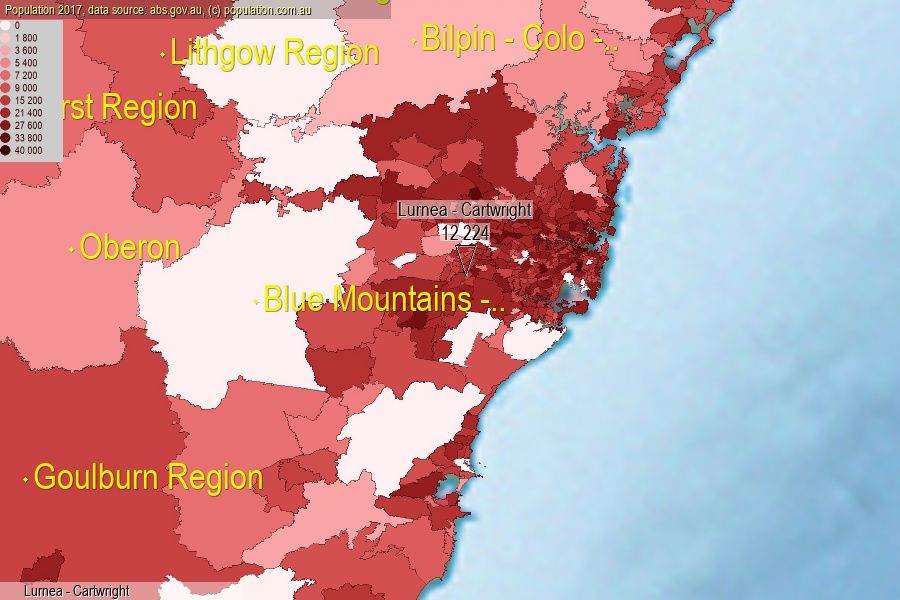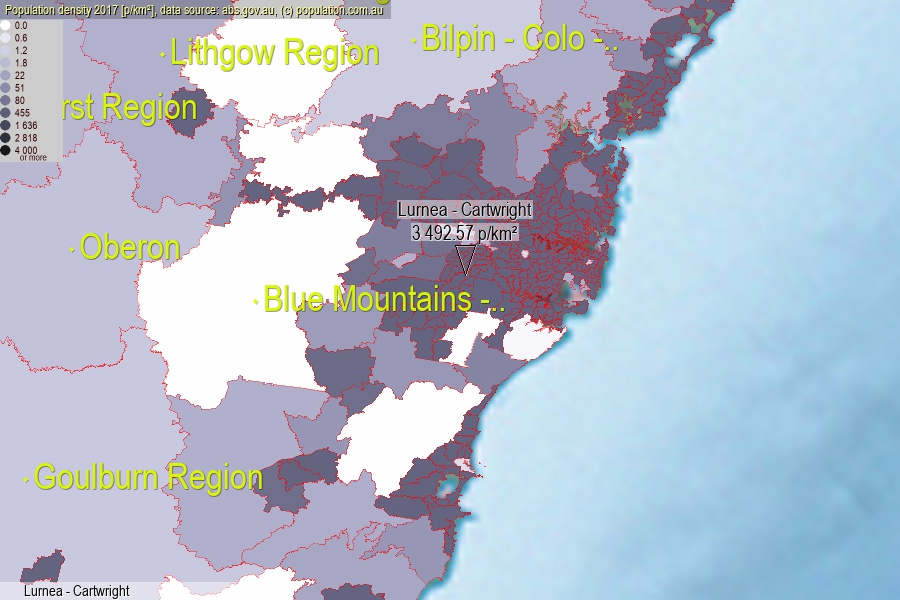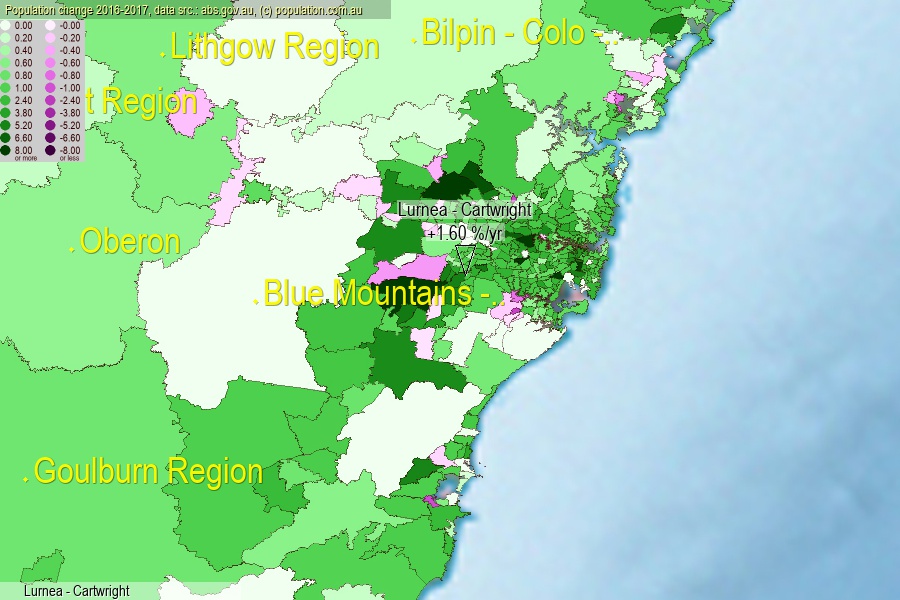 population.com.au
population.com.auLast official estimated population of Lurnea - Cartwright (as Statistical Area Level 2) was 12 224 people (on 2017-06-30)[2]. This was 0.05% of total Australian population and 0.154% of NSW population. Area of Lurnea - Cartwright is 3.50 km², in this year population density was 3 492.57 p/km² . If population growth rate would be same as in period 2016-2017 (+1.6%/yr), Lurnea - Cartwright population in 2025 would be 13 884. [0]



Click to enlarge. Lurnea - Cartwright is located in the center of the images.
Population [people], population density [p./km²] and population change [%/year] [2]
View borders » (new window) [4]
[2001-2002] -0.47 %/Yr.
[2002-2003] -0.64 %/Yr.
[2003-2004] -0.13 %/Yr.
[2004-2005] +0.55 %/Yr.
[2005-2006] +0.68 %/Yr.
[2006-2007] +0.85 %/Yr.
[2007-2008] +1.67 %/Yr.
[2008-2009] +0.99 %/Yr.
[2009-2010] +2.39 %/Yr.
[2010-2011] +1.71 %/Yr.
[2011-2012] +0.75 %/Yr.
[2012-2013] +1.26 %/Yr.
[2013-2014] +0.90 %/Yr.
[2014-2015] +1.53 %/Yr.
[2015-2016] +1.78 %/Yr.
[2016-2017] +1.60 %/Yr.
[0] Calculated with linear interpolation from officially estimated population
[1] Read more about SA2 and Australian Statistical Geography Standard (ASGS) on abs.gov.au
[2] Population data from Australian Bureau of Statistics (Population and density: 2017; change: 2016-2017)
[3] Digital Boundaries: Australian Statistical Geography Standard (ASGS) 2016.
[4] Border coordinates are simplifyed using Ramer-Douglas-Peucker algorithm.